-
 bitcoin
bitcoin $114320.977035 USD
-0.40% -
 ethereum
ethereum $4152.439985 USD
-1.75% -
 tether
tether $1.000111 USD
-0.04% -
 xrp
xrp $2.843037 USD
-1.63% -
 bnb
bnb $1013.349380 USD
-1.62% -
 solana
solana $208.362767 USD
-2.10% -
 usd-coin
usd-coin $0.999783 USD
0.00% -
 dogecoin
dogecoin $0.232559 USD
-1.00% -
 tron
tron $0.333491 USD
-1.09% -
 cardano
cardano $0.806310 USD
0.19% -
 hyperliquid
hyperliquid $45.023720 USD
-1.59% -
 ethena-usde
ethena-usde $1.000819 USD
-0.06% -
 chainlink
chainlink $21.241249 USD
-2.11% -
 avalanche
avalanche $30.035416 USD
-0.66% -
 stellar
stellar $0.364984 USD
-2.05%
How do you create or "mint" an NFT?
An NFT is a unique digital asset on the blockchain, created using platforms like Ethereum or Solana, with distinct metadata and ownership verified securely.
Aug 09, 2025 at 08:56 pm
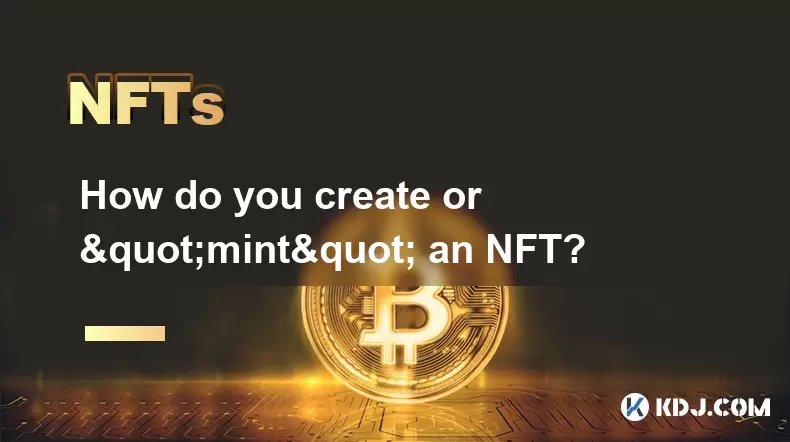
Understanding What an NFT Is Before Minting
Before diving into the process of creating an NFT, it's essential to understand what an NFT actually is. An NFT (Non-Fungible Token) is a unique digital asset verified using blockchain technology. Unlike cryptocurrencies such as Bitcoin or Ethereum, which are fungible and interchangeable, each NFT has distinct information and characteristics that make it irreplaceable and one-of-a-kind. These tokens are typically built on blockchains that support smart contracts, with Ethereum being the most widely used. Other blockchains like Solana, Polygon, and Binance Smart Chain also support NFT creation. The uniqueness of an NFT comes from its metadata, which includes details like ownership, creation date, and links to digital files such as images, videos, or audio.
Selecting the Right Blockchain for Your NFT
Choosing a blockchain is a critical first step in the minting process. Each blockchain offers different advantages in terms of transaction fees (gas fees), speed, and environmental impact. Ethereum is the most established platform for NFTs and offers the broadest marketplace support, but it often comes with high gas fees, especially during network congestion. Polygon, a Layer 2 solution for Ethereum, provides low-cost transactions and is compatible with Ethereum-based marketplaces like OpenSea. Solana is known for its fast processing and minimal fees, making it popular for high-volume NFT projects. When selecting a blockchain, consider factors like your target audience, the cost of minting, and the marketplaces where you plan to list your NFT. Most NFT platforms allow you to choose the blockchain during wallet setup or when uploading your digital file.
Setting Up a Cryptocurrency Wallet
To mint an NFT, you need a crypto wallet that supports the blockchain you’ve chosen. Popular wallets include MetaMask, Phantom (for Solana), and Trust Wallet. MetaMask is the most commonly used for Ethereum and Polygon. Setting up a wallet involves the following steps:
- Visit the official website (e.g., metamask.io) and download the browser extension or mobile app
- Create a new wallet and securely store your recovery phrase (seed phrase) in a safe, offline location
- Add funds to your wallet in the form of the blockchain’s native cryptocurrency (e.g., ETH for Ethereum, SOL for Solana)
- If using Polygon, switch your network within MetaMask from Ethereum to Polygon to reduce gas fees
Your wallet serves as your identity on the blockchain and allows you to sign transactions, pay gas fees, and manage your NFTs. Never share your private keys or recovery phrase with anyone.
Choosing an NFT Marketplace to Mint On
Once your wallet is set up, you need to select an NFT marketplace to mint your token. Each platform has its own interface and supported blockchains. Some of the most popular include:
- OpenSea: Supports Ethereum, Polygon, and other chains; offers lazy minting (no upfront gas fees)
- Rarible: Decentralized marketplace with multi-chain support and community governance
- Magic Eden: Dominant marketplace for Solana-based NFTs
- Mintable: User-friendly platform with gas-free minting options
To begin, connect your wallet to the chosen marketplace. This is typically done by clicking a “Connect Wallet” button and selecting your wallet provider (e.g., MetaMask). After connection, navigate to the “Create” or “Mint” section. You’ll be prompted to upload your digital file—this could be a JPEG, PNG, GIF, MP4, or MP3. Ensure your file meets the size and format requirements specified by the platform.
Configuring NFT Metadata and Properties
After uploading your file, you’ll need to fill in the metadata for your NFT. This includes:
- Name: The title of your NFT
- Description: A detailed explanation of the artwork or concept
- Collection: Assign the NFT to an existing or new collection
- Properties/Attributes: Useful for generative art (e.g., “Hat: Red,” “Eyes: Blue”)
- Royalties: Set a percentage (typically 5–10%) you’ll earn on future secondary sales
- Blockchain: Confirm the blockchain you’re minting on
Some platforms allow you to add unlockable content, such as a password-protected file or exclusive message accessible only to the owner. You can also specify whether the NFT is a single edition or part of a limited series. Accurate metadata enhances discoverability and value, so take time to craft meaningful descriptions and tags.
Completing the Minting Process
The final step is confirming the minting transaction. If you’re using a platform like OpenSea with lazy minting, your NFT is created off-chain and only incurs gas fees when someone purchases it. For on-chain minting, you’ll need to pay gas fees immediately. Here’s how it works:
- Click “Create” or “Mint” after filling in all details
- Your wallet will prompt you to confirm the transaction
- Approve the transaction and pay the required gas fee
- Wait for blockchain confirmation (this may take seconds to minutes depending on network congestion)
- Once confirmed, your NFT appears in your wallet and on the marketplace
After minting, you can choose to list it for sale via fixed price or auction. Set a price in the blockchain’s native currency (e.g., ETH, MATIC) and publish the listing. Your NFT is now live and can be viewed, shared, or purchased by others.
Common Questions About NFT Minting
Can I mint an NFT without paying gas fees?Yes, platforms like OpenSea and Mintable offer gas-free (lazy) minting, where the NFT is created only when purchased. The buyer pays the gas fee instead of the creator.
What file types and sizes are supported for NFTs?Most platforms support JPG, PNG, GIF, SVG, MP4, and MP3 files. Size limits vary—OpenSea allows up to 100 MB for video and audio, while image files should be under 40 MB.
Do I retain copyright after minting an NFT?Minting an NFT does not automatically transfer copyright. Unless explicitly stated in the NFT’s terms, you retain the copyright and can continue to use or license the original work.
Can I edit an NFT after it’s minted?Once an NFT is minted on the blockchain, its core data (like the token ID and file hash) cannot be altered. However, you can update listing details such as price or description.
Disclaimer:info@kdj.com
The information provided is not trading advice. kdj.com does not assume any responsibility for any investments made based on the information provided in this article. Cryptocurrencies are highly volatile and it is highly recommended that you invest with caution after thorough research!
If you believe that the content used on this website infringes your copyright, please contact us immediately (info@kdj.com) and we will delete it promptly.
- BlockDAG, DOGE, HYPE Sponsorship: Crypto Trends Shaping 2025
- 2025-10-01 00:25:13
- Deutsche Börse and Circle: A StableCoin Adoption Powerhouse in Europe
- 2025-10-01 00:25:13
- BlockDAG's Presale Buzz: Is It the Crypto to Watch in October 2025?
- 2025-10-01 00:30:13
- Bitcoin, Crypto, and IQ: When Genius Meets Digital Gold?
- 2025-10-01 00:30:13
- Stablecoins, American Innovation, and Wallet Tokens: The Next Frontier
- 2025-10-01 00:35:12
- NBU, Coins, and Crypto in Ukraine: A New Yorker's Take
- 2025-10-01 00:45:14
Related knowledge
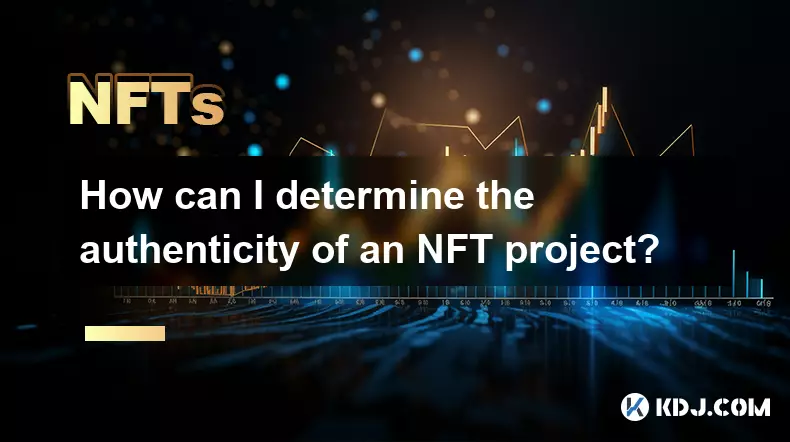
How can I determine the authenticity of an NFT project?
Sep 23,2025 at 05:18pm
Understanding the Project Team and Their Background1. Research the identities of the team members behind the NFT project. Verified social media profil...
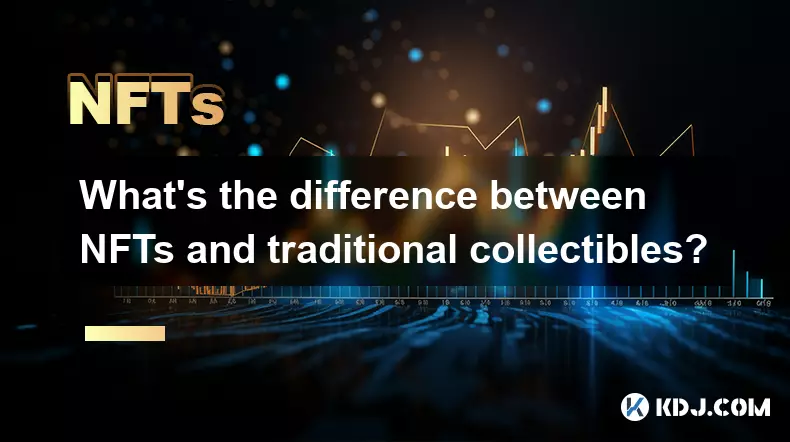
What's the difference between NFTs and traditional collectibles?
Sep 19,2025 at 12:55pm
Digital Ownership and Provenance1. NFTs are built on blockchain technology, which ensures transparent and immutable records of ownership. Every transa...
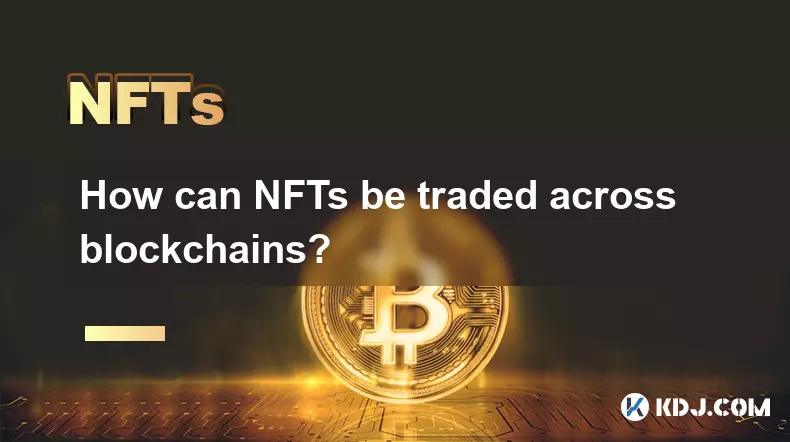
How can NFTs be traded across blockchains?
Sep 19,2025 at 12:00pm
Understanding Cross-Chain NFT Trading1. Non-fungible tokens (NFTs) are digital assets that represent ownership of unique items on a blockchain. Origin...
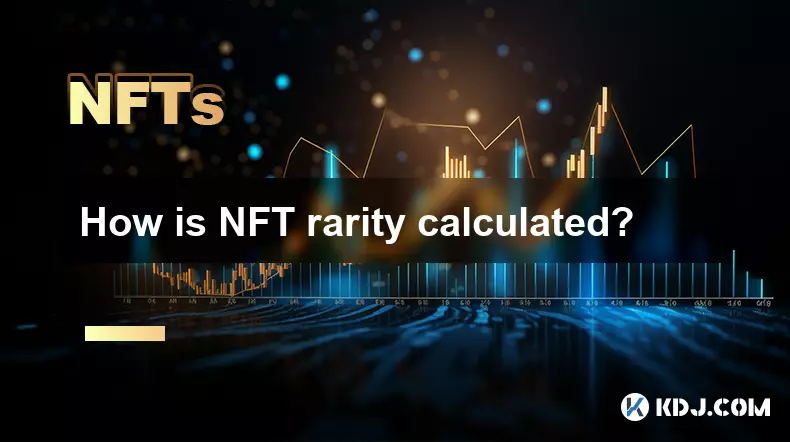
How is NFT rarity calculated?
Sep 18,2025 at 07:54pm
Understanding NFT Rarity Metrics1. NFT rarity is determined by analyzing the uniqueness of individual traits within a collection. Each NFT typically c...
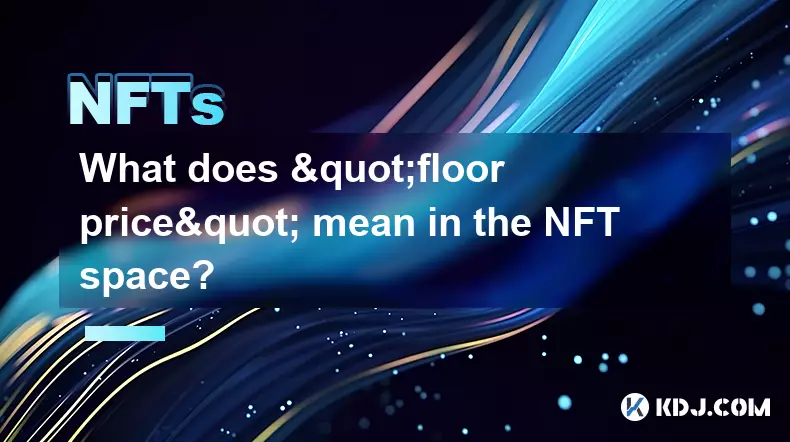
What does "floor price" mean in the NFT space?
Sep 22,2025 at 06:36am
Floor Price: A Core Metric in the NFT Marketplace1. The term floor price refers to the lowest current asking price for any item within a specific NFT ...

How do NFTs help content creators?
Sep 18,2025 at 08:00am
NFTs Empower Creators with Ownership and Monetization1. NFTs provide content creators with verifiable ownership of their digital works, ensuring authe...

How can I determine the authenticity of an NFT project?
Sep 23,2025 at 05:18pm
Understanding the Project Team and Their Background1. Research the identities of the team members behind the NFT project. Verified social media profil...

What's the difference between NFTs and traditional collectibles?
Sep 19,2025 at 12:55pm
Digital Ownership and Provenance1. NFTs are built on blockchain technology, which ensures transparent and immutable records of ownership. Every transa...

How can NFTs be traded across blockchains?
Sep 19,2025 at 12:00pm
Understanding Cross-Chain NFT Trading1. Non-fungible tokens (NFTs) are digital assets that represent ownership of unique items on a blockchain. Origin...

How is NFT rarity calculated?
Sep 18,2025 at 07:54pm
Understanding NFT Rarity Metrics1. NFT rarity is determined by analyzing the uniqueness of individual traits within a collection. Each NFT typically c...

What does "floor price" mean in the NFT space?
Sep 22,2025 at 06:36am
Floor Price: A Core Metric in the NFT Marketplace1. The term floor price refers to the lowest current asking price for any item within a specific NFT ...

How do NFTs help content creators?
Sep 18,2025 at 08:00am
NFTs Empower Creators with Ownership and Monetization1. NFTs provide content creators with verifiable ownership of their digital works, ensuring authe...
See all articles










































































